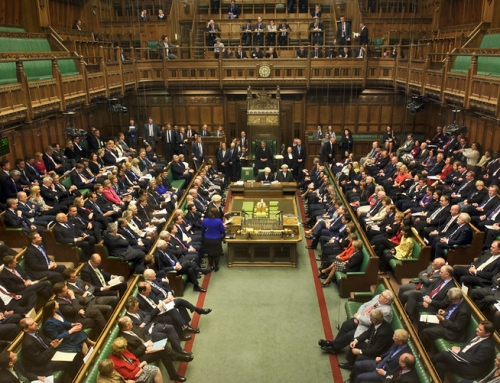22 January 2009
A response from Comprehensive Future
Main report
Evidence of the effect of selective educational systems
A report for the Sutton Trust.
Robert Coe, Karen Jones, Jeff Searle, Dimitra Kokotsaki, Azlina Mohd Kosnin,Paul Skinner
CEM Centre Durham University, July 2008
- The main study is an valuable resource to all who are interested in the subject
- The research makes clear that the impact of selection is widely felt across the English education system. Comprehensive Future has maintained for some time that the effect of selection on English children has been not been sufficiently recognized. According to the research only 28% of secondary schools lose no pupils at all to grammars. In some areas 5% of non selective schools lose more than 20% of potential pupils to grammars. Another 5% lose between 10 – 20 % (Robert Coe, personal communication). Across England as a whole 33% of wards house at least one pupil who attends a grammar school. Nationally 20% of grammar pupils do not live in the local authority in which the grammar is situated. The percentage of pupils crossing borough boundaries can rise to 75%.
- One of the main conclusions drawn by the researchers is that there is little evidence of significant ‘collateral harm’ to other schools because of selection into grammar schools. This is questionable. Firstly, the 161 schools which lose more than 20% of their potential pupils to grammar schools are manifestly affected. But almost as important is what the report identifies is the ‘far reaching but low level impact’ on other schools. In effect, what the research findings show is that grammar schools pluck out from a wide area children from backgrounds likely to be more supportive of learning, thereby making much more difficult the task of other schools in trying to sustain a balanced intake and ethos where education is held to be important.
- The study is also valuable in demonstrating the selectiveness of some “non-selective” schools, notably among CTCs and voluntary aided (mainly faith) schools, and the necessity for action if all admissions are to be fair and transparent. Community schools are shown to be generally much more representative of the communities they serve. However the study by denoting all non grammars as ‘non selective’ neglects the extent to which ‘non-selective’ schools are selecting partially by ability or aptitude. In many areas there is a definite ‘pecking order’ of schools. In areas such as Hertfordshire and Wandsworth for example where table 29 (p167) shows only 1% in grammars there are schools which are partially academically selective. Figures on how many schools are setting entry tests for aptitude are not available.
- The report (p 28) makes the point that ‘it could be argued that the relationship between a factor such as social class and achievement might be stronger within a selective system’. This has been the conclusion more than once of OECD PISA research. For example the executive summary of the 2006 PISA report published in December 2007 said A clear cut finding from PISA is that early differentiation of students by school is associated with wider than average socio-economic disparities and not with better results overall. All political parties want to narrow the achievement gap between rich and poor. The clear finding of PISA is that selective systems work against this.
- In its comparison of exam performance, the report offers three important caveats. One is that the findings of research, using different methodologies, samples etc., come to variable conclusions. Second is that pupils in grammar schools may differ from their peers in other schools in ways that are not easily captured by available measures. In terms of a ‘grammar school effect’ the study replicated previous research which found that grammar schools have selected pupils who would have been expected to make more progress as they were already making more progress from KS1-2. ‘Grammar schools have selected those pupils who would be expected to make more progress, rather than caused their pupils to perform better than they would have done’. (p253.)Third, the point is made that other outcomes are important too. As the authors say (p 270) we must remember our analyses have been limited to qualifications achieved at KS4 and say nothing about other effects of selection, such as affective outcomes or longer-term life consequences. The research for example does not explore outcomes post 16.
- Crucially the impact on the aspirations and motivation of individual children of failing the 11 plus (the majority) was not part of the study. The importance of this is given added weight as the study confirms previous research which found that 22% of those taking the test will be wrongly allocated as passing or failing the test.
- The authors conclude (p272) Our evidence will no doubt be welcomed by supporters of grammar schools. We must remember however that the debate about selection goes well beyond its impact on academic outcomes… It would be quite possible to accept all our findings and argue locally and consistently against selection. Comprehensive Future considers that the study supports our aim of ending selection on ability and aptitude which is an unnecessary burden on children, depressing aspirations and increasing segregation.
Social selectivity of state schools and the impact of grammars
Sutton Trust summary
Sutton Trust October 2008
- The Trust should be congratulated on commissioning this study. However, different people will draw different conclusions from it and Comprehensive Future differs from the Trust on a number of points.
- Comprehensive Future shares with the Sutton Trust the desire for every child to fulfill his or her academic and other potential. We do not find anything in this study to demonstrate that preserving selection at eleven is necessary to this end. We do not see the value of a system which labels children early in their school careers as failures, instead we want to see a fair admissions system and all schools encouraged and supported to be excellent. The summary refers to ‘abolition’ of schools. We do not want to see the abolition of any school, but an end to selection
- Whatever steps are taken to try to secure the entry of more eleven year olds from less-privileged backgrounds into grammar schools, there is no selection process which will not leave by the wayside many children who will define themselves as failures. The data in the report actually illustrates this. If we do not concentrate on developing a first-class comprehensive system, we will not scratch the surface of helping ‘talented pupils at primary schools’ in less advantaged areas. The confirmation of the finding the 22% of applicants are defined wrongly as passes or failures should not be neglected.
- Outreach activities (i.e. such as Pate’s) can, in the nature of things, only reach a small proportion of children. Educational opportunity should not depend on whether you happen to attend an outreach primary school. We are all in favour of expertise being spread and shared but through schemes that benefit all within a comprehensive system.
- The whole business of academic selection at eleven assumes that all candidates for secondary school are present in primaries at time of secondary transfer and able to give a good account of themselves in some form of testing. However, in many of our cities and now in some rural areas, there are significant numbers of children still mastering the English language at secondary transfer, while others arrive from overseas at secondary age. The largest population inflows recently have been from Eastern Europe. Selective schools are unlikely to admit many of these new arrivals unless their English is good, yet some are capable of very high achievement and may be expected to flourish provided the secondary school system gives them the chance. A school system in the 21st century has to be designed for 21st century circumstances.
- The summary comments on the finding that the creaming effect of grammar schools tends to impact on non-selective schools which have higher than average numbers of able pupils: the conclusion is therefore drawn that their overall composition is not unbalanced by the loss. This overlooks the knock-on effect on other schools. If a prestigious comprehensive loses potential pupils to a selective school, it may simply fill those places with high ability pupils who would have attended another school lower in the pecking order. This is how hierarchies of schools are created and entrenched and one of the reasons why some schools struggle to cope. .
- As the study shows, grammar schools are far from being the only schools which are academically and socially selective. This is not an argument for accepting the status quo but for changing it which to a certain extent is the aim of the School Admissions Code. There are other changes towards a fairer system which Comprehensive Future would like see as well as the abolition of overt selection. It is the combined effect of all forms of selection which causes damage to schools and children.
The proposed way forward
- Among other suggestions the Trust suggests further research on the 11 plus and an encouragement of outreach from grammar schools. We would like to make other suggestions.
- Surely there needs to be work on the issues not covered by this research, yet hugely important in a study of selection, ie the impact on the aspirations and motivation of pupils facing entry tests for secondary education?
- Many support the aim of encouraging schools to have more balanced intakes. It would be useful to gather research on the impact of a balanced intake.
- We also suggest it would be useful to commission a further study toexplore the admissions processes and criteria in the case of the top 100 schools mentioned in the report. Such research would be very much in line with the Trust’s aim to promote opportunity and remove limits on mobility.




